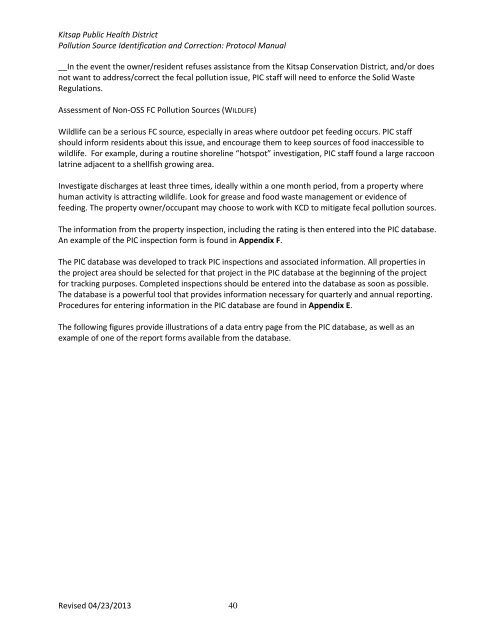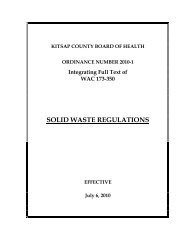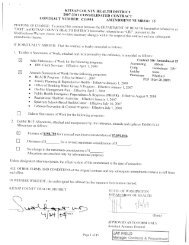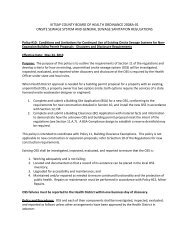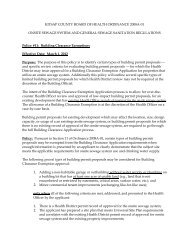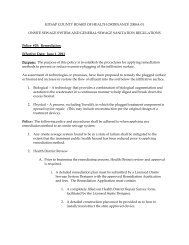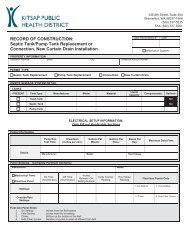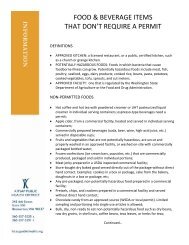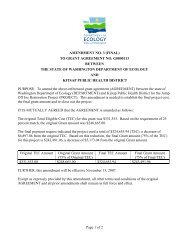(PIC) Protocol Manual - Kitsap Public Health District
(PIC) Protocol Manual - Kitsap Public Health District
(PIC) Protocol Manual - Kitsap Public Health District
You also want an ePaper? Increase the reach of your titles
YUMPU automatically turns print PDFs into web optimized ePapers that Google loves.
<strong>Kitsap</strong> <strong>Public</strong> <strong>Health</strong> <strong>District</strong><br />
Pollution Source Identification and Correction: <strong>Protocol</strong> <strong>Manual</strong><br />
__In the event the owner/resident refuses assistance from the <strong>Kitsap</strong> Conservation <strong>District</strong>, and/or does<br />
not want to address/correct the fecal pollution issue, <strong>PIC</strong> staff will need to enforce the Solid Waste<br />
Regulations.<br />
Assessment of Non-OSS FC Pollution Sources (WILDLIFE)<br />
Wildlife can be a serious FC source, especially in areas where outdoor pet feeding occurs. <strong>PIC</strong> staff<br />
should inform residents about this issue, and encourage them to keep sources of food inaccessible to<br />
wildlife. For example, during a routine shoreline “hotspot” investigation, <strong>PIC</strong> staff found a large raccoon<br />
latrine adjacent to a shellfish growing area.<br />
Investigate discharges at least three times, ideally within a one month period, from a property where<br />
human activity is attracting wildlife. Look for grease and food waste management or evidence of<br />
feeding. The property owner/occupant may choose to work with KCD to mitigate fecal pollution sources.<br />
The information from the property inspection, including the rating is then entered into the <strong>PIC</strong> database.<br />
An example of the <strong>PIC</strong> inspection form is found in Appendix F.<br />
The <strong>PIC</strong> database was developed to track <strong>PIC</strong> inspections and associated information. All properties in<br />
the project area should be selected for that project in the <strong>PIC</strong> database at the beginning of the project<br />
for tracking purposes. Completed inspections should be entered into the database as soon as possible.<br />
The database is a powerful tool that provides information necessary for quarterly and annual reporting.<br />
Procedures for entering information in the <strong>PIC</strong> database are found in Appendix E.<br />
The following figures provide illustrations of a data entry page from the <strong>PIC</strong> database, as well as an<br />
example of one of the report forms available from the database.<br />
Revised 04/23/2013 40


